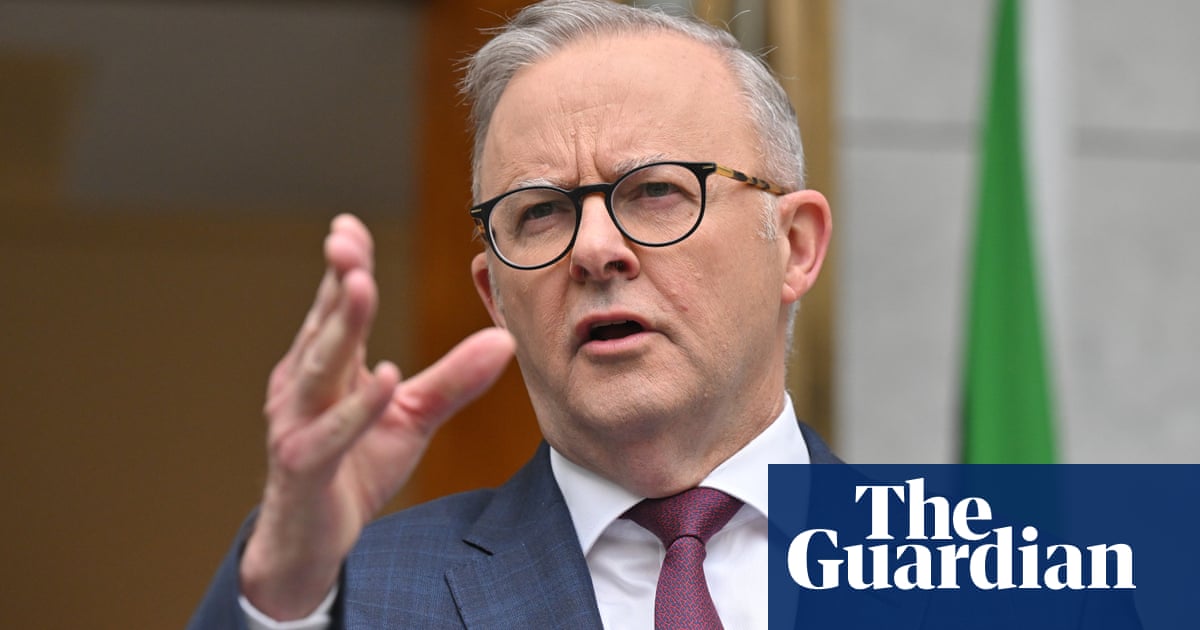Just $16.5m of Labor’s promised $1bn mental health package – or 1.65% – is due to be spent in the next financial year, according to official policy costings that reveal some new care centres might not open until 2029.
Anthony Albanese this month unveiled a majorsuite of policiesto make it easier for the public – in particular young Australians – to access free mental health treatment.
In an announcement hailed as “visionary” by leading psychiatrist and former Australian of the Year Patrick McGorry, the prime minister promised:
$225m for 31 new and upgraded Medicare mental health centres
More than $200m for 58 new, upgraded or expanded headspace services
$500m for 20 specialist care centres for young people with complex needs
$90m for more than 1,200 training places for mental health professionals and peer workers
Peak mental health groupspraised the $1bn pledge as a significant and much-needed investment to fill gaps in the provision of care for theone in five Australianswho experience a mental health disorder.
The 8 April announcement did not include several key details, including a proposed timeline for the new and upgraded clinics.
But those details have now been revealed in a costing request for the policy submitted to Treasury and Finance on 17 April, and published over the weekend.
The request, submitted under Albanese’s name, showed just $16.5m of the total $1bn commitment was expected to be spent in 2025-26.
The bulk of the funding – roughly $878m – is not allocated until the 2027-28 and 2028-29 financial years, as the services are progressively built and upgraded.
Under Labor’s plan, the first five new Medicare mental health centres would be opened in 2025-26, with 19 due to be operational in 2027-2028.
However, the final three aren’t scheduled to be up and running until 2028-2029.
The clinics would be in addition to the61 centres that the Albanese governmenthas been progressively opening over recent years.
The new, upgraded or expanded headspace services would be rolled out from 2026-27 to 2028-29.
The costing request also revealed the proposed timeline for the specialist youth mental health centres, a new model designed to provide intensive care to patients with personality disorders, eating disorders and early psychosis.
The government plans to establish 12 centres in 2027-28, the document showed.
The remaining eight would be upgraded and rebadged existing headspace early psychosis youth services.
Guardian Australia put questions to Labor about the costings, including why only $16.5m was set aside for next financial year.
“Our focus is on growing the mental health workforce as we expand the network of free mental health services across the country to build genuine, sustainable improvements in access to mental health supports when and where people need them,” the spokesperson said.
Peter Dutton has promised a total of$900m for mental health, which includes $500m to restore the 20 Medicare-subsidised mental health sessions offered during the pandemic and $400m for youth-specific services.
Sign up for the Afternoon Update: Election 2025 email newsletter
The government spokesperson claimed the Coalition’s plan would add to demand for private psychologists without growing the workforce, which would drive up gap fees and lengthen waitlists.
The Coalition declined to provide Guardian Australia with costings for its mental health policies but insisted they would be published ahead of the 3 May election.
A spokesperson said a Dutton government would restore mental health and suicide prevention as a “national priority”, guaranteeing that under its plan “people won’t be waiting years before any real action on mental health”.
“Labor announced it would copy the Coalition’s youth mental health measures at the 11th hour after three years of completely neglecting mental health, and now it’s clear that this announcement was a shameful con,” the spokesperson said.
Giancarlo de Vera, the chief executive of New South Wales-based mental health consumer group Being, was concerned Labor’s promised funding would roll out too slowly and was not targeted at the services patients needed.
“Consumers are looking for community-based, peer-led services, and the fact that the budget is only really funding 500 peer workers is not what consumers want,” de Vera said.
“Consumers want services that support their ability to stay in the community, and services that support a greater choice in the support they do access.”
In Australia, the crisis support serviceLifelineis 13 11 14. In the UK and Ireland,Samaritanscan be contacted on freephone 116 123, or email jo@samaritans.org or jo@samaritans.ie. In the US, you can call or text theNational Suicide Prevention Lifelineon 988, chat on988lifeline.org, ortext HOMEto 741741 to connect with a crisis counselor. Other international helplines can be found atbefrienders.org
